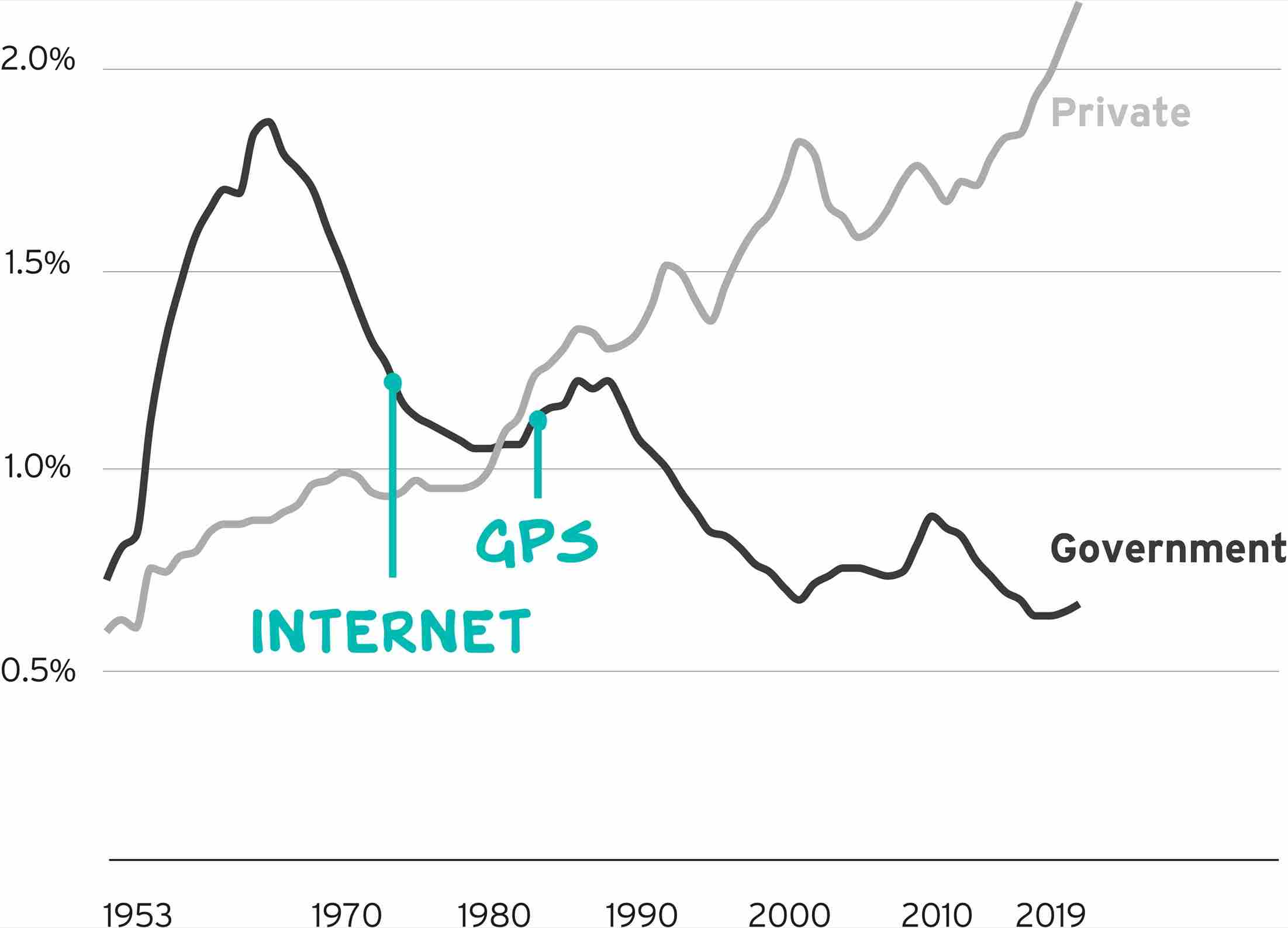Privatized R&D = Privatized Progress
The payout horizon for research and development is often distant, but those payouts can be enormous. In the 1950s and ’60s, federal government investment in emerging digital technologies laid the foundation for the unprecedented tech boom of the past forty years. Consider the iPhone: all of its core technologies flow from those public sector investments, from the chip at its heart to the GPS satellites and the global network on which it depends.
Federal funding for R&D as a share of GDP has declined steadily since that golden era, from a peak of 1.9% to 0.7% in 2019. Private investment has filled the breach—total R&D spend as a percentage of GDP is slightly higher today than it was in the ’60s. But leaving the future up to private interests is shortsighted.
First, private investments are subject to short-term market pressures, and as virtuous as the discipline of making your quarterly numbers can be, it’s too limiting for the long-term, uncharted inquiry of deep R&D. Second, because private investment means private ownership, the fruits of this research won’t be fully exploited by nor subject to the democratic controls of government management.
The R&D labs of today are pushing the boundaries of artificial intelligence, genetic manipulation, and viral replication. Do we want those technologies in the hands of elected officials, or under the exclusive control of Elon and Zuck?
24

U.S. R&D as Percentage of GDP, by Source of Funding

Source: NSF.